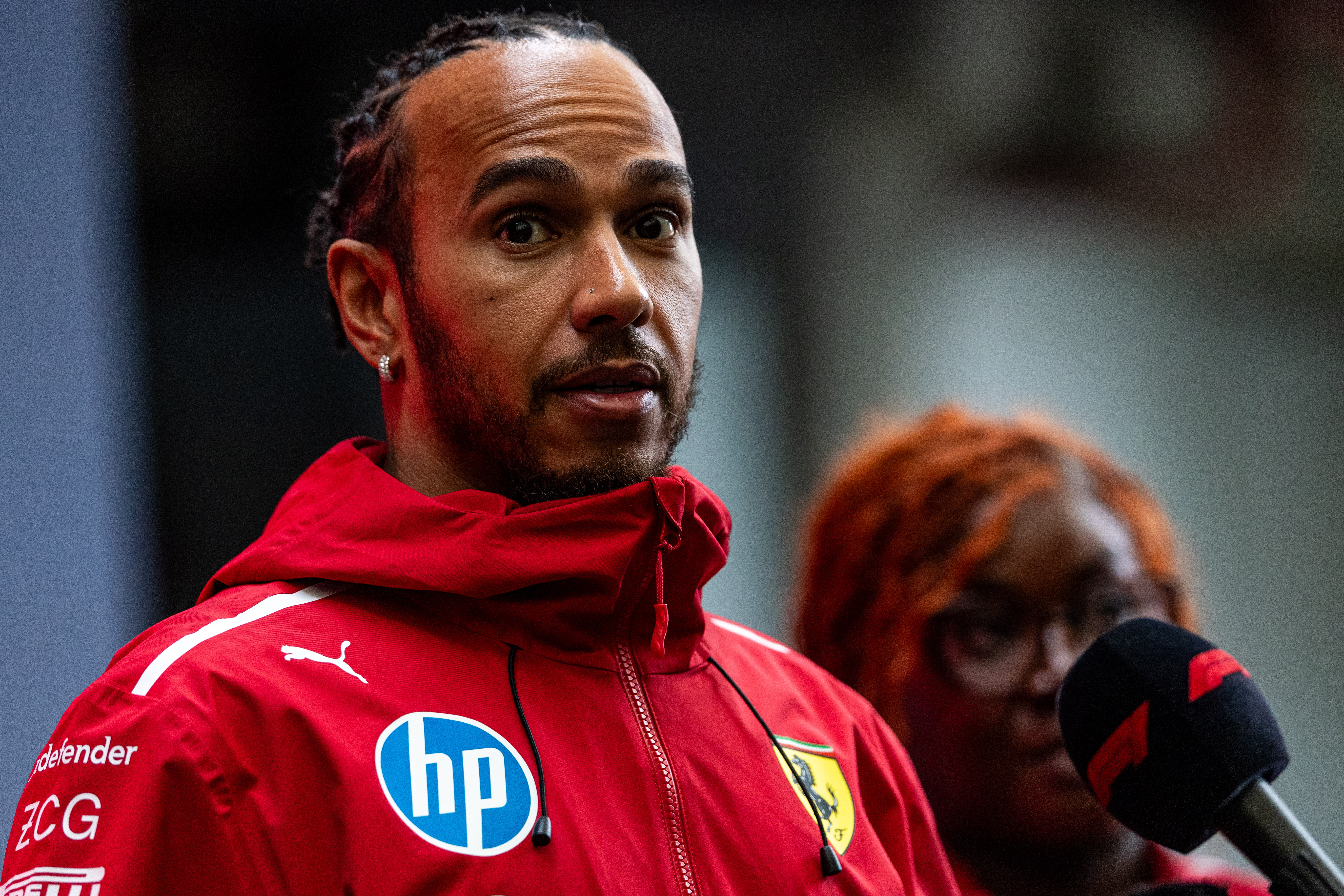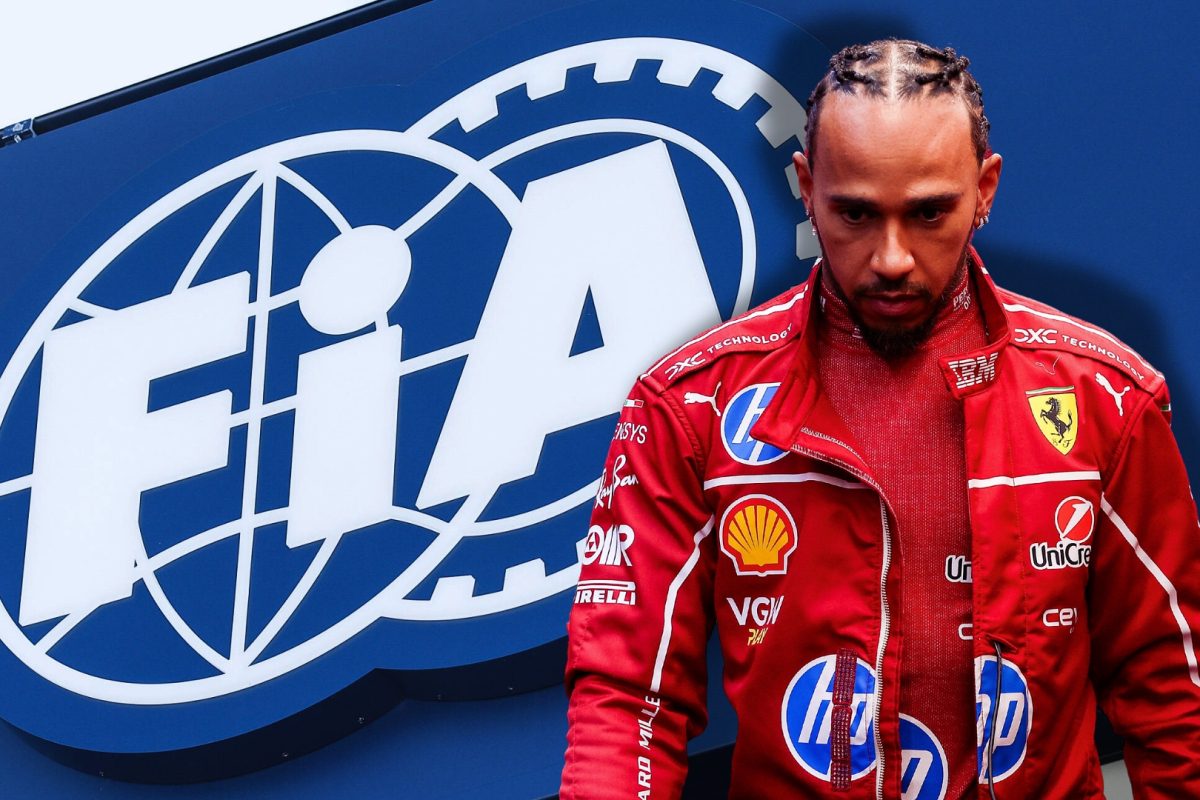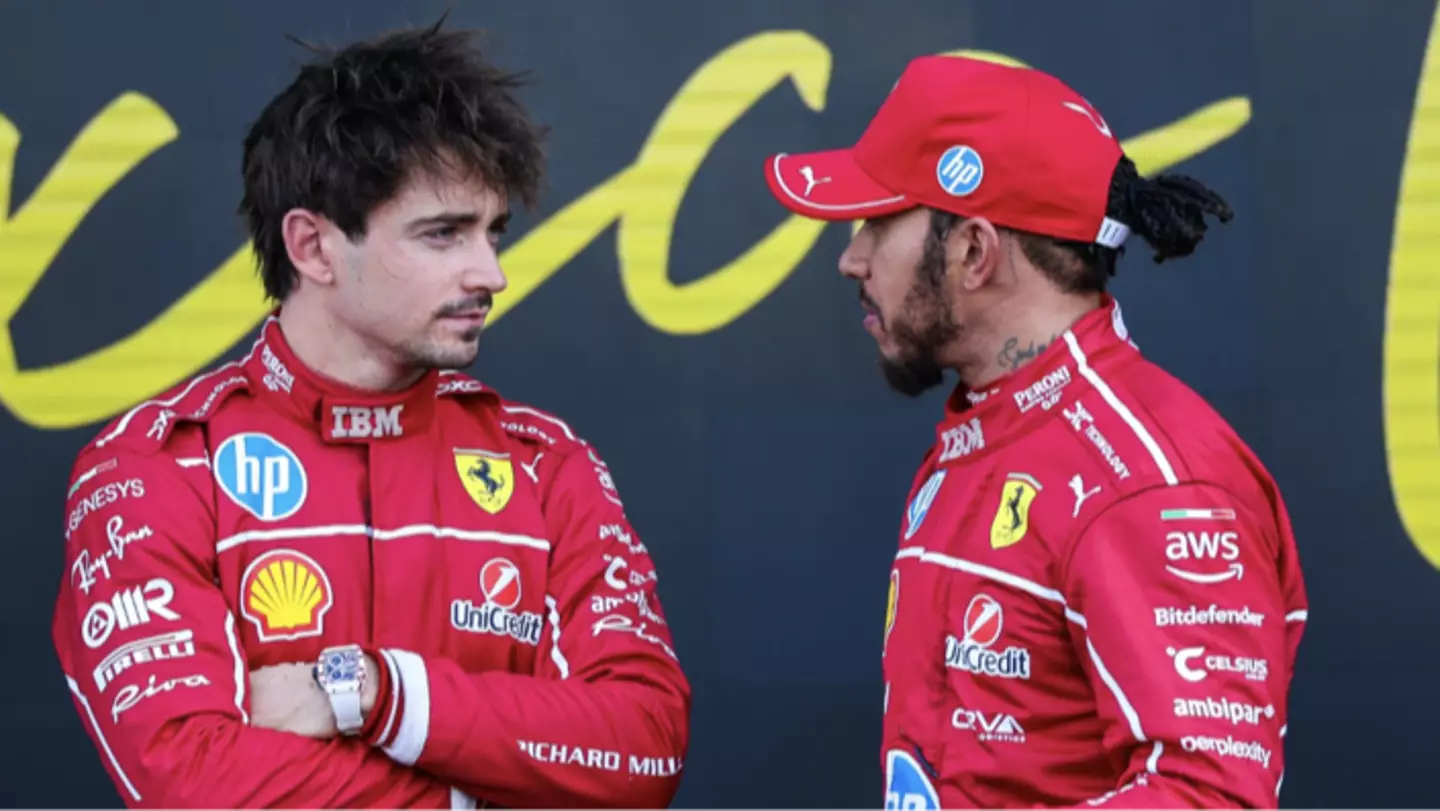The cockpit of a Formula 1 car is usually a place of furious energy—a vessel for adrenaline, anger, or elation. But for Lewis Hamilton at the Interlagos circuit in Brazil, it became a chamber of devastating, silent defeat.
As the static of the team radio cleared, following a disastrous Sprint Qualifying session that saw the seven-time World Champion eliminated in the second phase (Q2), three words cut through the air. They were not a protest. They were not a complaint. They were an acknowledgment so weary, so final, that they resonated with far more danger than any scream of frustration: “Yeah, every time, man.”
Hamilton, the most successful driver in Formula 1 history, had reached a breaking point, a moment of profound resignation. The incident in Brazil didn’t just mark the loss of a qualifying session; it signaled the tragic loss of faith in the two pillars that define his career: the team he joined to resurrect his legacy, and the governing body that is supposed to safeguard the integrity of the sport.
What happens when a champion of his caliber—a man who built his legend on precision and unyielding control—stops believing? What follows is the slow, painful unraveling of a dream, played out in front of a global audience, at the very venue where he claimed his first championship title.

The Brazilian Betrayal: When Internal Chaos Becomes Catastrophe
The Brazilian Grand Prix was supposed to be a turning point. Hamilton had been building momentum, and his team had promised—or at least implied—progress. Interlagos is sacred ground for him, a track synonymous with miracles. Yet, from the very first session, the weekend felt cursed, a casualty of operational chaos.
The first mistake, a fatal one in hindsight, was made hours before qualifying even began. While rival teams like McLaren and Red Bull methodically gathered critical performance data on medium and soft tires, his team made a baffling choice: Hamilton and his teammate, Charles Leclerc, ran exclusively on hard compounds. This conservative caution left them utterly blind. They had no competitive baseline, no crucial data, and no understanding of where the car’s limits truly lay. The result spoke for itself: Hamilton finished practice in 18th position, Leclerc in 19th, more than a second and a half off the pace. The car, the SF25, wasn’t merely slow—it was lost.
Despite this crippling disadvantage, Q1 of the Sprint Qualifying offered a fleeting glimmer of hope, with Hamilton scraping through in seventh. But the car was unpredictable, demanding a prayer at every braking zone and a correction at every corner.
The real disaster, the one that broke the champion’s spirit, was reserved for SQ2. With the clock ticking down, Hamilton launched his final, desperate attempt to advance to Q3. He needed perfection, a salvage operation for a weekend already slipping away.
It was his own teammate who delivered the crushing blow. At Turn 9, Charles Leclerc locked up under braking, spun violently, and left his car sideways on the racing line. Double yellow flags instantly exploded across the sector. Hamilton, arriving at maximum attack, had his lap instantly neutralized—his chance at Q3 gone in the time it took Leclerc’s car to complete a 360-degree spin.
The devastation, however, was compounded by a chilling fact that went largely unnoticed in the initial shock: even without the yellow flags, Hamilton’s time would not have been enough. He would have finished 14th anyway. The SF25 simply lacked the fundamental pace required to compete.
The team immediately defaulted to damage control: arguments of bad luck, the wrong setup, and unfortunate timing. But for Hamilton, sitting helpless in 11th position, these were just standard excuses for an extraordinary, and increasingly repetitive, failure. When his engineer offered apologetic sympathy, the three words of resignation followed: “Yeah, every time, man.”
This was not a singular event. It was the weary acknowledgment of a pattern: conservative strategies that backfired, data collection that missed the mark, and internal errors that consistently cascaded into catastrophic results. For a driver whose career is defined by relentless precision, being trapped within a system that consistently stumbles is nothing short of psychological torture.

The Shadow of Scrutiny: A Calculated Threat from the FIA
But the nightmare of the on-track failure was only half the story. Hours after qualifying ended, the drama escalated when the FIA summoned Hamilton for a formal investigation. The charge? Failing to slow down sufficiently under double yellow flag conditions.
Telemetry data presented a damning case: Hamilton had, paradoxically, set a personal best micro-sector time precisely where Leclerc’s car was stationary. Suddenly, the issue was no longer just a bad qualifying session; it was about potential grid penalties, super license points, and the public scrutiny of his conduct on the track.
This threat was especially potent given Hamilton’s history. Earlier in the season, at the Dutch Grand Prix, he had faced an identical infraction, resulting in a five-place grid drop and points added to his license. The agonizing lesson in narrow margins loomed large over him again in Brazil.
The FIA investigation dragged on for hours, with multiple camera angles, GPS data, and telemetry scrutinized down to the millisecond. The team’s defense was that Hamilton had reacted appropriately, lifting slightly, modifying his line, and abandoning the lap attempt. The stewards faced a dilemma: technically, the rules had been breached, but context—distance, partial deceleration, and immediate lap abortion—complicated a simple ruling.
Finally, the verdict delivered a temporary reprieve: no additional penalties. Hamilton was absolved, but the warning issued felt more like a threat than a gesture of mercy.
The deeper truth, however, remains unavoidable: Hamilton never should have been in that position in the first place. If the team had done their homework on Friday, if they had coordinated their drivers, and—most crucially—if the SF25 had possessed the baseline performance it was promised, none of this administrative chaos would have mattered. The FIA investigation was merely a symptom of the team’s larger, systemic disease—operational chaos dressed up as “bad luck.”
The Voice of the Paddock: Hamilton’s Calculated Critique
Hamilton’s frustration with his team was palpable, yet it was only half of the story behind his resigned outburst. Just days before the Brazilian GP, he had unleashed something far more explosive: a direct, calculated attack on Formula 1’s governing body itself.
Still simmering from the controversial Mexican Grand Prix, where he felt he had been selectively penalized while others escaped punishment for similar incidents, Hamilton delivered one of the most brutal public statements of his career.
“There isn’t any clarity,” he told reporters at Interlagos, his voice calm, yet cutting. He demanded transparency and accountability, criticizing the decision-making process: “Too many decisions are made behind closed doors.”
This was more than emotional venting. This was calculated criticism from a man who had watched entire championships decided by questionable calls, notably the controversial officiating in Abu Dhabi. He questioned the secrecy, the inconsistency, and the selective rule enforcement that left drivers perpetually guessing what constituted fair racing.
“I don’t know if they realize the weight of their decisions,” he stated, warning that these choices “can decide the results of championships. Some work needs to be done there.”
The timing was devastating. A seven-time world champion, struggling with an underperforming car, publicly dismantling the credibility of the FIA at one of the sport’s most iconic venues. The paddock went silent, with other drivers privately echoing his concerns, yet fearing to express them publicly. Hamilton had become the singular voice of a profound, collective frustration. The FIA’s response to this extraordinary critique? Deafening silence.

A Warning of Acceptance
The Brazilian Grand Prix leaves F1 at a crossroads. Will the team finally listen, restructure their operations, and give Hamilton the car he deserves, allowing the legend to rise one more time? Or will his patience run out, turning the move that was supposed to define his legacy into the one that ultimately destroyed it?
And what of the FIA? If the inconsistency and secrecy continue, driver trust will erode further, and the sport will hemorrhage credibility, becoming a spectacle where the rules only make sense to the people writing them in secret.
Has Lewis Hamilton made the biggest mistake of his career by joining a team plagued by operational instability, or is the real, existential crisis that Formula 1’s governing body has lost control of its own sport?
The question now is whether a seven-time world champion can possibly survive in a system where both his team and the rulebook appear fundamentally designed to break him. One thing is certain: that radio message from Brazil wasn’t mere frustration. It was a warning. When legends stop fighting and start accepting failure, that is the moment you know something fundamental is irrevocably broken. The fate of the sport—and of Hamilton’s final years in it—now hangs on whether anyone has the will to fix it before it is truly too late.